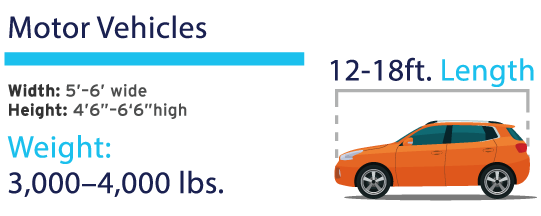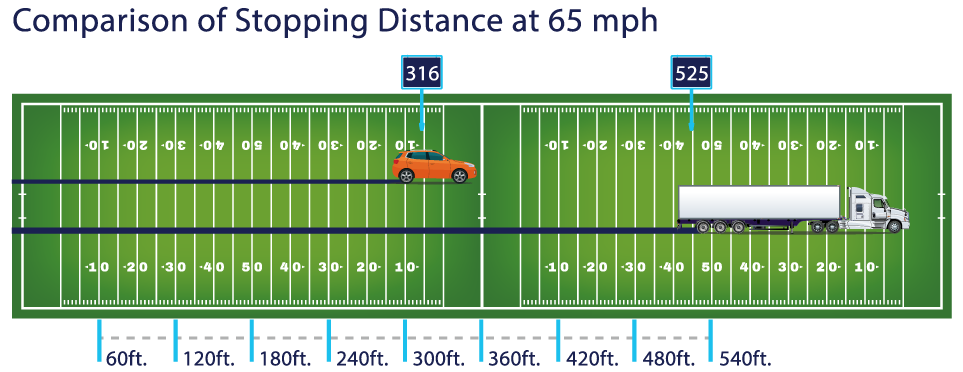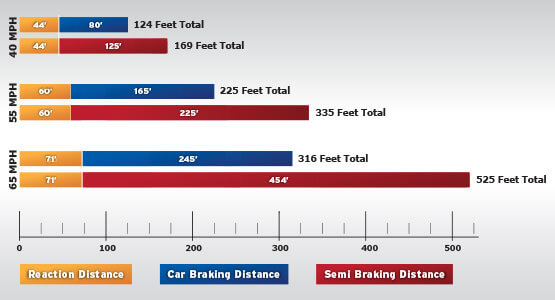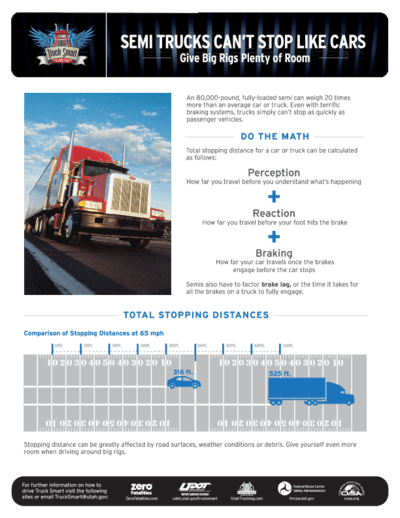more time
to stopTrucks need more time to stop
A typical tractor-trailer or other large truck can weigh as much as 80,000 pounds by law. Most passenger vehicles are about 3,000 – 4,000 pounds. A passenger vehicle weighing 4,000 pounds, traveling under ideal conditions at a speed of 65 miles per hour would take 316 feet to stop (nearly the length of a football field). In comparison, a fully loaded tractor-trailer weighing 80,000 pounds traveling under ideal conditions at a speed of 65 miles per hour will take 525 feet to stop (almost the length of two football fields).



HOW TO DETERMINE STOPPING DISTANCE
Total stopping distance is the distance your vehicle travels from the time you see a hazard and press on the brake until the vehicle stops.
Total stopping distance is made up of three parts:
- Perception Distance – The distance a vehicle travels while a driver is identifying, predicting and deciding to slow down for a hazard.
- Reaction Time – The time it takes for a driver to execute a decision once a danger is recognized. The distance your vehicle travels while you react is called a reaction distance.
- Braking Distance – The distance a vehicle travels from the time a driver begins pressing on the brake pedal until the vehicle comes to a stop.

Brake lag
In addition to perception distance, reaction time and braking distance, trucks have one additional factor – brake lag. Semi-trucks have different brakes than the regular passenger vehicle. Most passenger vehicles on the road have hydraulic brakes, which are liquid, faster and more instantaneous. Semi-trucks have air brakes, which have a lag time.
Think of your garden hose and when you turn the nozzle on, the water does not automatically come out the end of the hose. Rather, you turn the nozzle, wait while the water travels, and then it comes out the end. It is the same concept with these brakes. The truck driver hits the brake, the air has to be built up and reach everywhere on the truck, and then the brakes are applied. Of course, semi’s need more distance and time just from the heavy loads alone, but they also have brake lag that plays a part.
Total stopping distances

DOWNLOAD THE STOPPING DISTANCE FACT SHEET (PDF)
An 80,000 pound, fully-loaded semi can weigh 20 times more than an average car or truck. Even with terrific braking systems, trucks simply can’t stop as quickly as passenger vehicles. Read more in the PDF.



